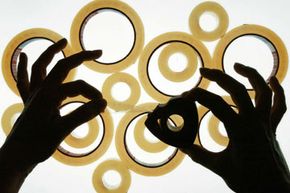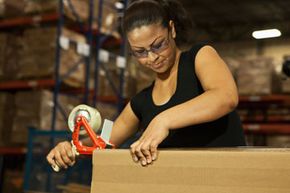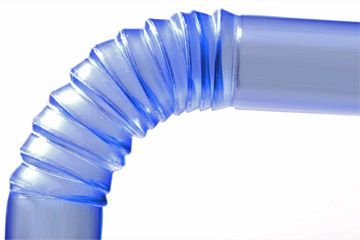Key Takeaways
- The adhesives in tape, known as pressure-sensitive adhesives (PSA), rely on physical reactions, utilizing materials like silicones, acrylics and rubbers enhanced with tacky resin for increased stickiness.
- PSAs form bonds through two main processes: wetting and van der Waals forces.
- The effectiveness of adhesive tape lies in its design as much as in the chemistry of adhesion, enabling removable and flexible uses for everyday tasks.
It may be as ubiquitous as running water. Some might go so far as to say it's nearly as convenient. Before 3M introduced adhesive tape in 1925, the primary means of adhesion were pretty permanent and messy.
Masking tape, that 1925 creation, was intended to solve a very specific problem: applying two-toned paint jobs to cars, which were popular at the time.
Advertisement
Before masking tape, auto shops were "masking off" for each color application using glue and paper. Peeling off the paper ruined countless paint jobs. Richard Drew, a young 3M research assistant, witnessed one such ruined job and the furious cursing that followed. Drew, who had absolutely zero experience in adhesives, decided, apparently on the spot, to create an adhesive that could be removed from dry paint without peeling it off [source: ACS]. Two years later, masking tape was introduced.
He next invented clear, cellophane tape, later called Scotch® Magic Tape. Gift-wrapping would never be the same.
Nor would everyday household fixes. During the Great Depression, when most people had to repair things like tablecloths and upholstery instead of replacing them, clear tape offered a fast, cheap, aesthetically satisfying solution. As a result, while many companies were closing their doors or barely getting by, Magic Tape kept 3M not just afloat but thriving [source: ACS].
Today, adhesive tape comes in cellophane-finish for wrapping and matte finish for labeling. Hefty duct tape is a staple of many home repairs, while double-sided tape tacks up posters. Brown tape wraps packages and stretchy adhesives work for bandaging. Joining two materials with tape has been so common for so long that people almost never think to ask "how does it do that?"
Turns out, tape is rather remarkable. It's not adhesion itself but the specific type of adhesive used on tape that makes it indispensable in daily life. The "sticky" used in sticky tape is different in that it relies primarily on physical processes, not chemical ones, to adhere.
Advertisement




